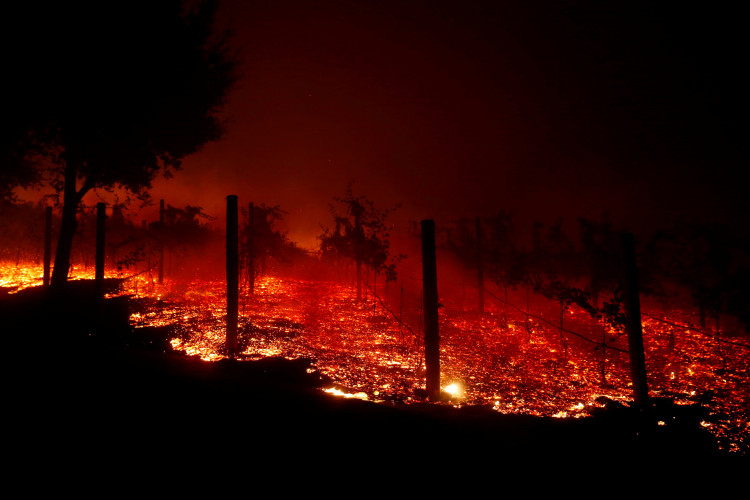As wildfires ravage northern California, nearly 30,000 residents have been ordered to evacuate, with the Thompson Fire posing a significant threat. The fire, which ignited earlier this week, has already consumed over 3,500 acres and is only 7% contained, according to the California Department of Forestry and Fire Protection (CalFire). This disaster is compounded by a severe heatwave, with temperatures expected to reach as high as 118 degrees Fahrenheit.
The Thompson Fire erupted near Oroville, approximately 70 miles north of Sacramento, sending massive plumes of smoke visible from space. Oroville is perilously close to Paradise, the town devastated by the 2018 Camp Fire, which claimed 85 lives and became California's deadliest wildfire.
Butte County Sheriff Kory Honea highlighted the critical situation, urging residents to avoid using fireworks, which could exacerbate the fire risk. "The last thing we need is somebody who's purchased fireworks from a local fire stand going out and doing something stupid," he warned.
The state's fire season, which typically extends until October, has grown increasingly severe. According to scientists, the area of burned land in northern and central California has increased fivefold from 1996 to 2021 compared to the previous 24-year period, a change attributed to human-caused climate change. This year, the National Weather Service has issued excessive heat and red flag warnings, indicating extreme conditions conducive to fire outbreaks.
California Governor Gavin Newsom has declared a state of emergency in Butte County to mobilize additional resources to combat the blaze. The declaration aims to provide the necessary support for firefighting efforts and assist displaced residents. On the ground, over 1,400 firefighters are battling the flames with heavy machinery, while helicopters and planes drop water and fire retardant from above.
The fire's rapid spread has already led to the destruction of 74 structures across the state. Fortunately, no fatalities have been reported so far. However, the intense heatwave and ongoing dry conditions have officials on high alert for potential new fires.
Local residents like Brittanie Hardie, who recently moved to California from Louisiana, are experiencing the devastating impact firsthand. Hardie, who had to evacuate her home, expressed her shock to the San Francisco Chronicle, saying, "I knew wildfires were bad in California, but I didn't know it was this bad."
The current heatwave, which the National Weather Service describes as "record-breaking and dangerous," is set to grip nearly half of the U.S. population, including regions beyond California. Forecasters predict that the oppressive heat will extend into Oregon and Washington, with temperatures likely to break records in several areas.
The conditions have left officials warning about the heightened risk of fires, especially with the upcoming July 4th Independence Day celebrations. Authorities are urging the public to exercise caution and refrain from activities that could spark new blazes.
Firefighters have lined roads to prevent the flames from reaching homes, and local officials have canceled public events, such as Oroville's 4th of July fireworks celebration, to reduce the risk of additional fires. Oroville City Council member Shawn Webber praised the efforts of the firefighters, stating on Facebook, "They have done an excellent job protecting us from even more destruction."
The fires in California are part of a broader trend affecting the western United States, where decades-long droughts have been punctuated by brief periods of heavy rain, leading to overgrown vegetation that dries out and fuels wildfires. Climate scientists attribute these changes to shifting weather patterns exacerbated by global warming.
As the state braces for potentially more devastating blazes, the immediate focus remains on controlling the Thompson Fire and ensuring the safety of residents. The concerted efforts of state and local agencies, supported by federal resources, aim to mitigate the damage and protect communities in the path of the wildfire.






